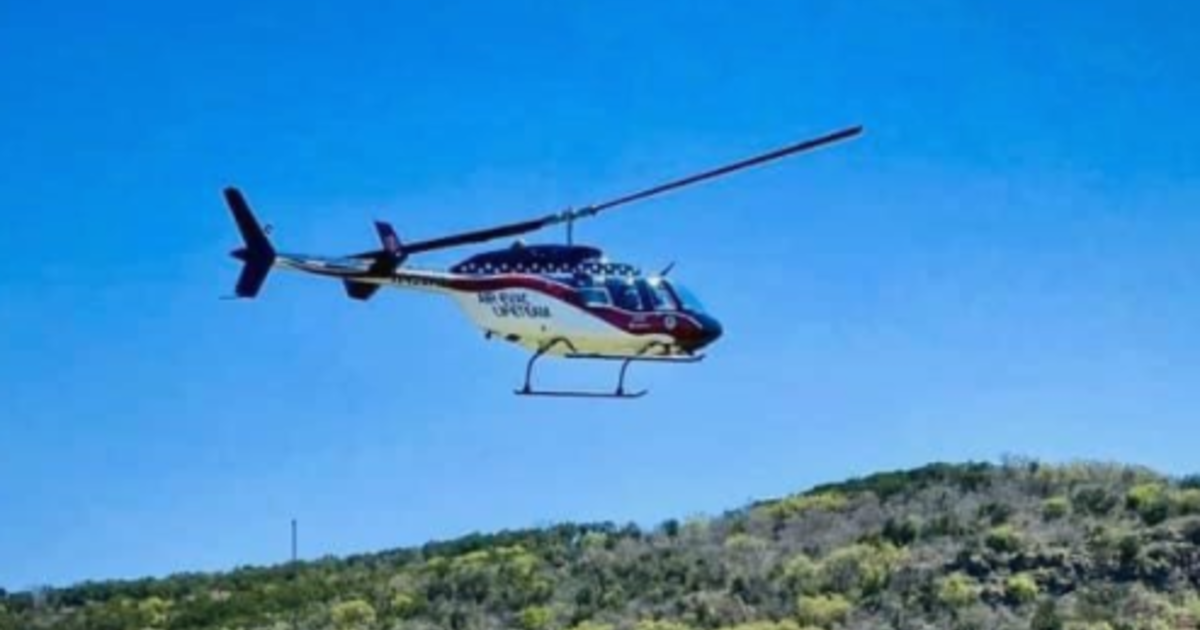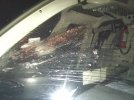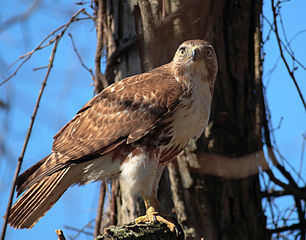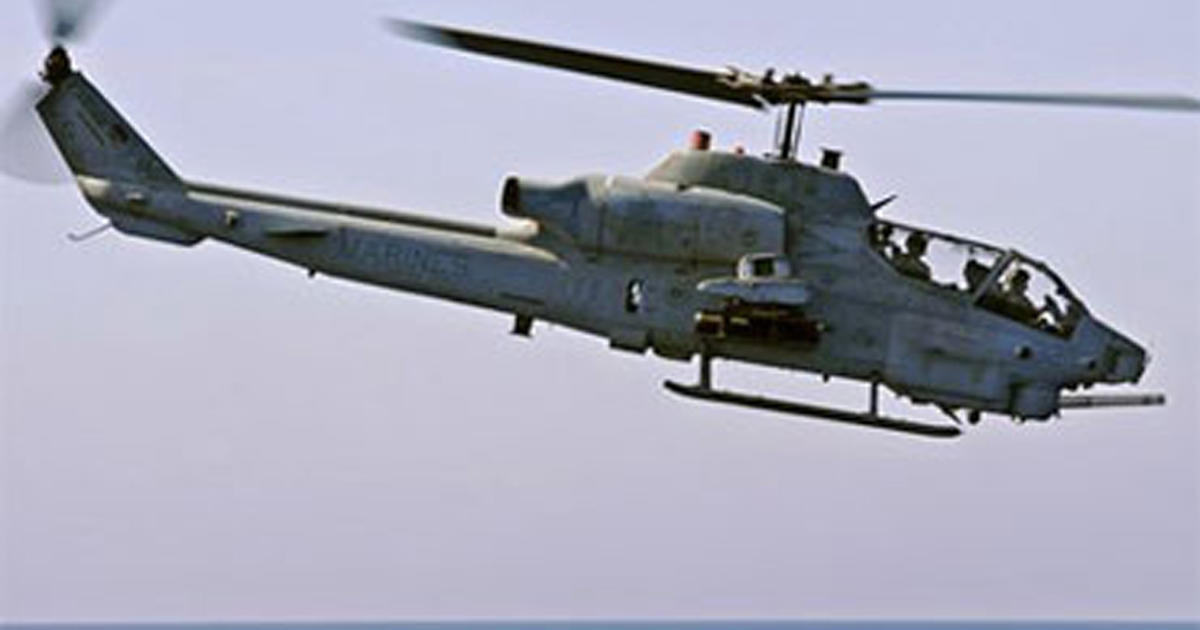You are using an out of date browser. It may not display this or other websites correctly.
You should upgrade or use an alternative browser.
You should upgrade or use an alternative browser.
Medical Helicopter 3 fatal 1/20/24 - Weatherford, OK
- Thread starter srp_4737
- Start date
srp_4737
Pre-Flight

Dead geese found in flight control and debris field of medical helicopter that crashed in Oklahoma, killing 3
The National Transportation Safety Board said that the remains of a dead goose was found "embedded" in the flight control system of a helicopter that crashed in Oklahoma, killing three.
"Dead geese found in flight control system"
Any way to prevent this from happening? I'm assuming medical ops don't use NVG?

Dead geese found in flight control and debris field of medical helicopter that crashed in Oklahoma, killing 3
The National Transportation Safety Board said that the remains of a dead goose was found "embedded" in the flight control system of a helicopter that crashed in Oklahoma, killing three.www.cbsnews.com
"Dead geese found in flight control system"
Any way to prevent this from happening? I'm assuming medical ops don't use NVG?
Ask Sully.
Tarheelpilot
Final Approach
- Joined
- Dec 5, 2010
- Messages
- 7,396
- Location
- North Carolina once again.
- Display Name
Display name:
Tarheelpilot
Why would you make that assumption?
Dead geese found in flight control and debris field of medical helicopter that crashed in Oklahoma, killing 3
The National Transportation Safety Board said that the remains of a dead goose was found "embedded" in the flight control system of a helicopter that crashed in Oklahoma, killing three.www.cbsnews.com
"Dead geese found in flight control system"
Any way to prevent this from happening? I'm assuming medical ops don't use NVG?
srp_4737
Pre-Flight
My thought was cost of equipment and training - but really I was putting it out there as a question.Why would you make that assumption?
Doc Holliday
En-Route
That operator uses NVG.
midwestpa24
En-Route
- Joined
- Mar 4, 2016
- Messages
- 4,994
- Display Name
Display name:
midwestpa24

Dead geese found in flight control and debris field of medical helicopter that crashed in Oklahoma, killing 3
The National Transportation Safety Board said that the remains of a dead goose was found "embedded" in the flight control system of a helicopter that crashed in Oklahoma, killing three.www.cbsnews.com
"Dead geese found in flight control system"
Any way to prevent this from happening? I'm assuming medical ops don't use NVG?
NVGs won't prevent bird strikes. Bird strikes are not uncommon, especially when flying at lower altitudes. Many even happen in broad daylight.
FYI: there were over 16,000 aircraft bird strikes in 2022. Every now and then they hit in the wrong place.Any way to prevent this from happening?
Tarheelpilot
Final Approach
- Joined
- Dec 5, 2010
- Messages
- 7,396
- Location
- North Carolina once again.
- Display Name
Display name:
Tarheelpilot
It’s common for ems to use NVG. I worked for crop dusting outfits that had fixed wing and helicopter ops using NVG’s and we were very “cost” conscious. It’s an easy sell for ems. Actually fits that mission much better than ag.My thought was cost of equipment and training - but really I was putting it out there as a question.
donjohnston
Pattern Altitude
"Dead geese found in flight control system"
Any way to prevent this from happening?
Ask Sully.
Ask Sully what? So what insight could he provide on geese impacting the flight control system of a helicopter?
- Joined
- Jul 3, 2012
- Messages
- 15,250
- Display Name
Display name:
Velocity173
Yes, they use NVGs. I’ve struck maybe a half a dozen birds at night including the one below. Never saw any of them. How to prevent it? Well a bird strike windscreen and avoid flying below 3,000 ft. Easier said than done in a part 27 helicopter.
Dead geese found in flight control and debris field of medical helicopter that crashed in Oklahoma, killing 3
The National Transportation Safety Board said that the remains of a dead goose was found "embedded" in the flight control system of a helicopter that crashed in Oklahoma, killing three.www.cbsnews.com
"Dead geese found in flight control system"
Any way to prevent this from happening? I'm assuming medical ops don't use NVG?

Lndwarrior
Cleared for Takeoff
- Joined
- Jan 15, 2009
- Messages
- 1,129
- Display Name
Display name:
Gary
I was out walking late last night. I'd always assumed most birds, geese included, didn't fly at night. I was surprised when a very large gaggle of noisy geese flew overhead around 11pm. Guess it's not just owls and bats.
One method is population control. Don’t know what type of goose was involved in this accident but in the DC Metro area the Canada goose is ubiquitous and a nuisance. None of the localities in my area have the political will to perform effective wildlife control. Similar problem with white tailed deer, which fortunately fly only when struck by vehicle.
Dead geese found in flight control and debris field of medical helicopter that crashed in Oklahoma, killing 3
The National Transportation Safety Board said that the remains of a dead goose was found "embedded" in the flight control system of a helicopter that crashed in Oklahoma, killing three.www.cbsnews.com
"Dead geese found in flight control system"
Any way to prevent this from happening? I'm assuming medical ops don't use NVG?
Ask Sully what? So what insight could he provide on geese impacting the flight control system of a helicopter?
How to prevent a birdstrike. It starts with being able to see the bird. Hard enough in the day time, damn near impossible at night, even with NODs.
If you’re lucky enough to see a big ol’ hunk of butterball co-altitude, you get to decide which way to go lickety-split. Personally I’m a nose-high goes high, bank away from the threat guy, but night ops leaves me fat dumb and happy with the big sky theory re: bird strikes.
Sometimes, mother nature kicks you square in the crotch though.
AV8R_87
Pre-takeoff checklist
They got NVG certified.I was surprised when a very large gaggle of noisy geese flew overhead around 11pm
Joking aside, I doubt the geese damaged the flight controls. Some years ago a PHI S-76C suffered a bird strike right at the top of the windhield, shattering it and allowing the bird remains to hit the fire extingusher T-handles, which moved aft and pulled the throttles to idle. The pilots were startled by the impact and disoriented/blinded by the remains, faili g to notice in time that the throttles were close to idle. A coupled autopilot kept trying to increase collective to maintain airspeed, alliwing the rotor rpm to decay to an unrecoverable limit.

Safety Lessons from a Fatal Helicopter Bird Strike: Sikorsky S-76C++ N748P, 4 January 2009 - Aerossurance
We look at a fatal S-76C++ helicopter accident that highlights a range of certification, modification, crew alerting, training and emergency response lessons, and also discuss current activity on helicopter bird strike certification requirements.
 aerossurance.com
aerossurance.com
Something similar could've happened here.
They found one bird went through the servo cowl and was “embedded” in the flight control servo(s) which in turn probably caused the upset and loss of the M/R.I doubt the geese damaged the flight controls.
FYI: from hawk impact to ground impact was 11 seconds. Of that time the pilots only had about 6 seconds worth to figure out what happened. Unfortunately, due to the throttles being knocked back to about 75%, the MR decayed to less than 90% in the first 5 seconds which was unrecoverable at that altitude. No bird remains made into the cockpit in this accident. The impact force jarred the controls aft.S-76C suffered a bird strike right at the top of the windhield,
donjohnston
Pattern Altitude
Considering that Sully‘s plane took geese through both engines, you think that makes him the go to source of how to avoid hitting geese? In a helicopter?How to prevent a birdstrike. It starts with being able to see the bird. Hard enough in the day time, damn near impossible at night, even with NODs.
If you’re lucky enough to see a big ol’ hunk of butterball co-altitude, you get to decide which way to go lickety-split. Personally I’m a nose-high goes high, bank away from the threat guy, but night ops leaves me fat dumb and happy with the big sky theory re: bird strikes.
Sometimes, mother nature kicks you square in the crotch though.
- Joined
- Jul 3, 2012
- Messages
- 15,250
- Display Name
Display name:
Velocity173
Several geese were also found in the debris area. There’s a possibility of one of those damaging other critical components of the aircraft…like this one.

 www.cbsnews.com
www.cbsnews.com

Report: Bird strike caused Camp Pendelton helicopter crash that left 2 Marines dead
AH-1W Cobra attack helicopter collided with a red-tailed hawk, killing the two Marines on board; Report called event unavoidable
Last edited:
- Joined
- Jul 3, 2012
- Messages
- 15,250
- Display Name
Display name:
Velocity173
Kinda wonder if they had their little anti bird light retrofit. Then again, bird strikes went up with us so not totally sure of their effectiveness.

 preciseflight.com
preciseflight.com

Pulselite® Technoloy & Systems - Precise Flight
The Pulselite® system from Precise Flight is designed for commercial aircraft, rotorcraft helicopters and general aviation planes
 preciseflight.com
preciseflight.com
Bill
Touchdown! Greaser!
- Joined
- Mar 2, 2005
- Messages
- 15,105
- Location
- Southeast Tennessee
- Display Name
Display name:
This page intentionally left blank
I’ve noticed that light as your helos fly over, but I wonder. Just like deer whistles, do they really do anything?Kinda wonder if they had their little anti bird light retrofit. Then again, bird strikes went up with us so not totally sure of their effectiveness.

Pulselite® Technoloy & Systems - Precise Flight
The Pulselite® system from Precise Flight is designed for commercial aircraft, rotorcraft helicopters and general aviation planespreciseflight.com
Considering that Sully‘s plane took geese through both engines, you think that makes him the go to source of how to avoid hitting geese? In a helicopter?
You missed the point. The question asked was how to prevent a bird strike.
If you ask Sully, he’d say he couldn’t tell you and you’ve only got moments to execute while human factors eat into the limited time available.
- Joined
- Jul 3, 2012
- Messages
- 15,250
- Display Name
Display name:
Velocity173
Not sure. I think the stats say a 60 % reduction in strikes but after we equipped, strikes actually went up. Still need more time to assess their effectiveness.I’ve noticed that light as your helos fly over, but I wonder. Just like deer whistles, do they really do anything?
I won’t go into company policy but in the accident aircraft above, I wouldn’t be able to cruise at that altitude if weather permitted. Then again, I’ve hit birds at or above our company min altitudes. These kinds of strikes will continue to happen simply because of the flight profiles we fly.
Chuck Nabors…old school.
The latest systems the FAA is testing uses UV LEDs to deter birds. There is/was an FAA report out that used a crop duster as the test aircraft and if I recall correctly, the UV lights would chase birds out of a field where pulse lites would not. Seems birds "see" more in the UV spectrum.Not sure. I think the stats say a 60 % reduction in strikes but after we equipped, strikes actually went up. Still need more time to assess their effectiveness.
- Joined
- Jul 3, 2012
- Messages
- 15,250
- Display Name
Display name:
Velocity173
Yeah a saw an article on that the other day. Interesting to see how that plays out.The latest systems the FAA is testing uses UV LEDs to deter birds. There is/was an FAA report out that used a crop duster as the test aircraft and if I recall correctly, the UV lights would chase birds out of a field where pulse lites would not. Seems birds "see" more in the UV spectrum.
Albany Tom
En-Route
- Joined
- Jul 23, 2021
- Messages
- 3,484
- Display Name
Display name:
Albany Tom
I wish there were fewer geese. No sarcasm.
